Shibo Zhang
SoundAI Technology Co., Ltd
A Synergistic Framework of Nonlinear Acoustic Computing and Reinforcement Learning for Real-World Human-Robot Interaction
May 04, 2025Abstract:This paper introduces a novel framework integrating nonlinear acoustic computing and reinforcement learning to enhance advanced human-robot interaction under complex noise and reverberation. Leveraging physically informed wave equations (e.g., Westervelt, KZK), the approach captures higher-order phenomena such as harmonic generation and shock formation. By embedding these models in a reinforcement learning-driven control loop, the system adaptively optimizes key parameters (e.g., absorption, beamforming) to mitigate multipath interference and non-stationary noise. Experimental evaluations-covering far-field localization, weak signal detection, and multilingual speech recognition-demonstrate that this hybrid strategy surpasses traditional linear methods and purely data-driven baselines, achieving superior noise suppression, minimal latency, and robust accuracy in demanding real-world scenarios. The proposed system demonstrates broad application prospects in AI hardware, robot, machine audition, artificial audition, and brain-machine interfaces.
TPatch: A Triggered Physical Adversarial Patch
Dec 30, 2023



Abstract:Autonomous vehicles increasingly utilize the vision-based perception module to acquire information about driving environments and detect obstacles. Correct detection and classification are important to ensure safe driving decisions. Existing works have demonstrated the feasibility of fooling the perception models such as object detectors and image classifiers with printed adversarial patches. However, most of them are indiscriminately offensive to every passing autonomous vehicle. In this paper, we propose TPatch, a physical adversarial patch triggered by acoustic signals. Unlike other adversarial patches, TPatch remains benign under normal circumstances but can be triggered to launch a hiding, creating or altering attack by a designed distortion introduced by signal injection attacks towards cameras. To avoid the suspicion of human drivers and make the attack practical and robust in the real world, we propose a content-based camouflage method and an attack robustness enhancement method to strengthen it. Evaluations with three object detectors, YOLO V3/V5 and Faster R-CNN, and eight image classifiers demonstrate the effectiveness of TPatch in both the simulation and the real world. We also discuss possible defenses at the sensor, algorithm, and system levels.
Cost Sensitive GNN-based Imbalanced Learning for Mobile Social Network Fraud Detection
Mar 28, 2023



Abstract:With the rapid development of mobile networks, the people's social contacts have been considerably facilitated. However, the rise of mobile social network fraud upon those networks, has caused a great deal of distress, in case of depleting personal and social wealth, then potentially doing significant economic harm. To detect fraudulent users, call detail record (CDR) data, which portrays the social behavior of users in mobile networks, has been widely utilized. But the imbalance problem in the aforementioned data, which could severely hinder the effectiveness of fraud detectors based on graph neural networks(GNN), has hardly been addressed in previous work. In this paper, we are going to present a novel Cost-Sensitive Graph Neural Network (CSGNN) by creatively combining cost-sensitive learning and graph neural networks. We conduct extensive experiments on two open-source realworld mobile network fraud datasets. The results show that CSGNN can effectively solve the graph imbalance problem and then achieve better detection performance than the state-of-the-art algorithms. We believe that our research can be applied to solve the graph imbalance problems in other fields. The CSGNN code and datasets are publicly available at https://github.com/xxhu94/CSGNN.
Deep Learning in Human Activity Recognition with Wearable Sensors: A Review on Advances
Nov 11, 2021
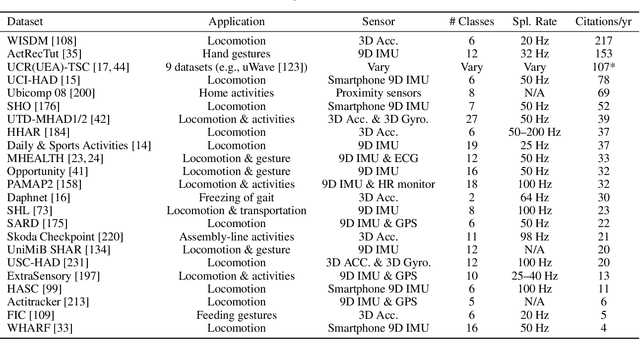

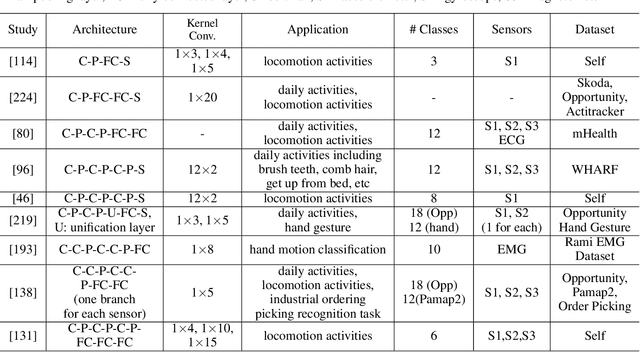
Abstract:Mobile and wearable devices have enabled numerous applications, including activity tracking, wellness monitoring, and human-computer interaction, that measure and improve our daily lives. Many of these applications are made possible by leveraging the rich collection of low-power sensors found in many mobile and wearable devices to perform human activity recognition (HAR). Recently, deep learning has greatly pushed the boundaries of HAR on mobile and wearable devices. This paper systematically categorizes and summarizes existing work that introduces deep learning methods for wearables-based HAR and provides a comprehensive analysis of the current advancements, developing trends, and major challenges. We also present cutting-edge frontiers and future directions for deep learning--based HAR.
CoughTrigger: Earbuds IMU Based Cough Detection Activator Using An Energy-efficient Sensitivity-prioritized Time Series Classifier
Nov 07, 2021
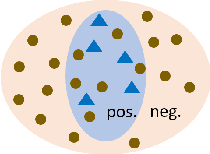
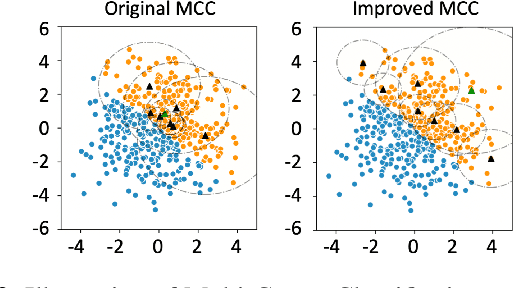
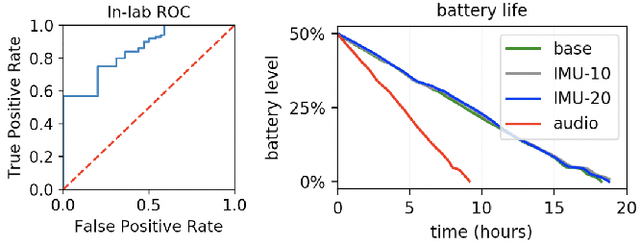
Abstract:Persistent coughs are a major symptom of respiratory-related diseases. Increasing research attention has been paid to detecting coughs using wearables, especially during the COVID-19 pandemic. Among all types of sensors utilized, microphone is most widely used to detect coughs. However, the intense power consumption needed to process audio signals hinders continuous audio-based cough detection on battery-limited commercial wearable products, such as earbuds. We present CoughTrigger, which utilizes a lower-power sensor, an inertial measurement unit (IMU), in earbuds as a cough detection activator to trigger a higher-power sensor for audio processing and classification. It is able to run all-the-time as a standby service with minimal battery consumption and trigger the audio-based cough detection when a candidate cough is detected from IMU. Besides, the use of IMU brings the benefit of improved specificity of cough detection. Experiments are conducted on 45 subjects and our IMU-based model achieved 0.77 AUC score under leave one subject out evaluation. We also validated its effectiveness on free-living data and through on-device implementation.
A Novel Multi-Centroid Template Matching Algorithm and Its Application to Cough Detection
Sep 04, 2021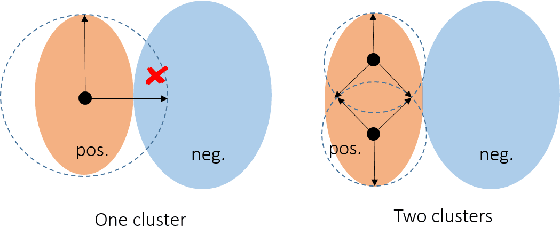
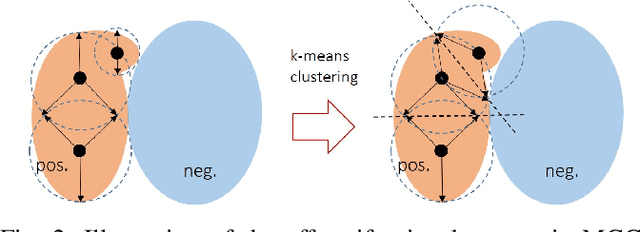
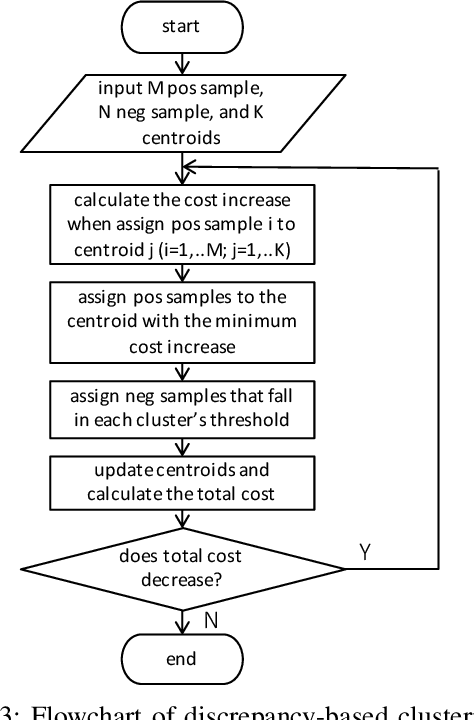
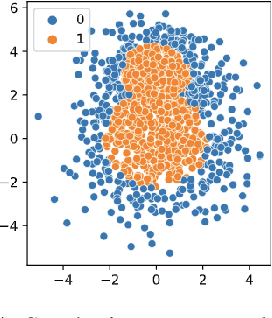
Abstract:Cough is a major symptom of respiratory-related diseases. There exists a tremendous amount of work in detecting coughs from audio but there has been no effort to identify coughs from solely inertial measurement unit (IMU). Coughing causes motion across the whole body and especially on the neck and head. Therefore, head motion data during coughing captured by a head-worn IMU sensor could be leveraged to detect coughs using a template matching algorithm. In time series template matching problems, K-Nearest Neighbors (KNN) combined with elastic distance measurement (esp. Dynamic Time Warping (DTW)) achieves outstanding performance. However, it is often regarded as prohibitively time-consuming. Nearest Centroid Classifier is thereafter proposed. But the accuracy is comprised of only one centroid obtained for each class. Centroid-based Classifier performs clustering and averaging for each cluster, but requires manually setting the number of clusters. We propose a novel self-tuning multi-centroid template-matching algorithm, which can automatically adjust the number of clusters to balance accuracy and inference time. Through experiments conducted on synthetic datasets and a real-world earbud-based cough dataset, we demonstrate the superiority of our proposed algorithm and present the result of cough detection with a single accelerometer sensor on the earbuds platform.
NeckSense: A Multi-Sensor Necklace for Detecting Eating Activities in Free-Living Conditions
Nov 20, 2019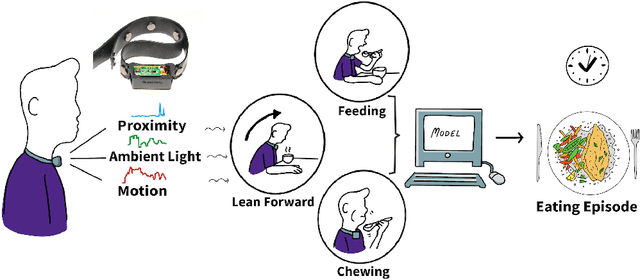


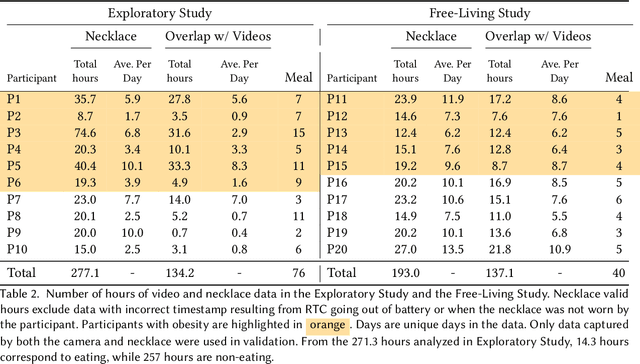
Abstract:We present the design, implementation, and evaluation of a multi-sensor low-power necklace 'NeckSense' for automatically and unobtrusively capturing fine-grained information about an individual's eating activity and eating episodes, across an entire waking-day in a naturalistic setting. The NeckSense fuses and classifies the proximity of the necklace from the chin, the ambient light, the Lean Forward Angle, and the energy signals to determine chewing sequences, a building block of the eating activity. It then clusters the identified chewing sequences to determine eating episodes. We tested NeckSense with 11 obese and 9 non-obese participants across two studies, where we collected more than 470 hours of data in naturalistic setting. Our result demonstrates that NeckSense enables reliable eating-detection for an entire waking-day, even in free-living environments. Overall, our system achieves an F1-score of 81.6% in detecting eating episodes in an exploratory study. Moreover, our system can achieve a F1-score of 77.1% for episodes even in an all-day-around free-living setting. With more than 15.8 hours of battery-life NeckSense will allow researchers and dietitians to better understand natural chewing and eating behaviors, and also enable real-time interventions.
Visualization of Multi-Objective Switched Reluctance Machine Optimization at Multiple Operating Conditions with t-SNE
Nov 04, 2019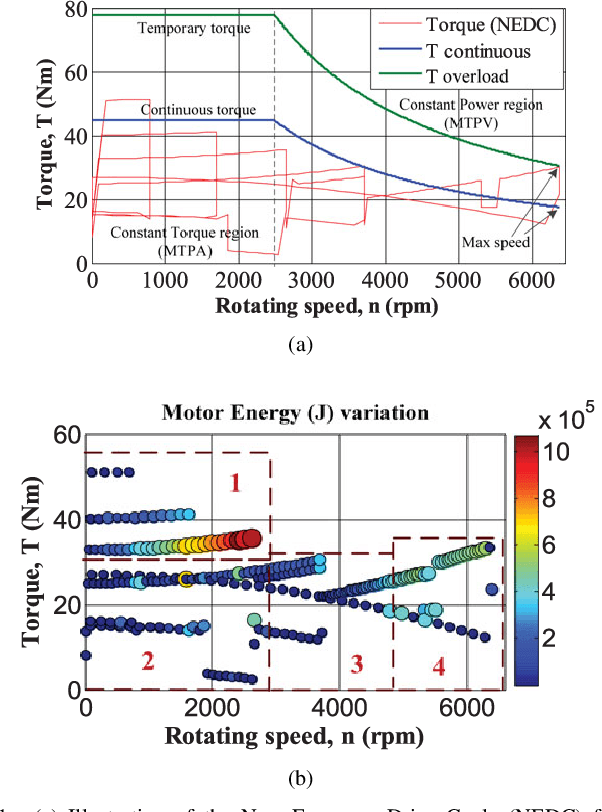
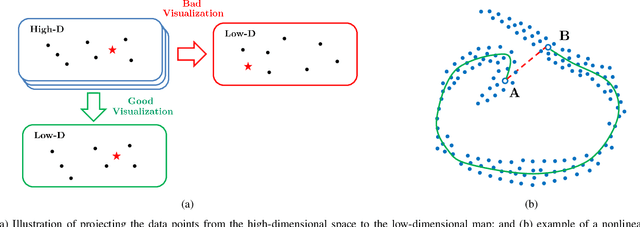
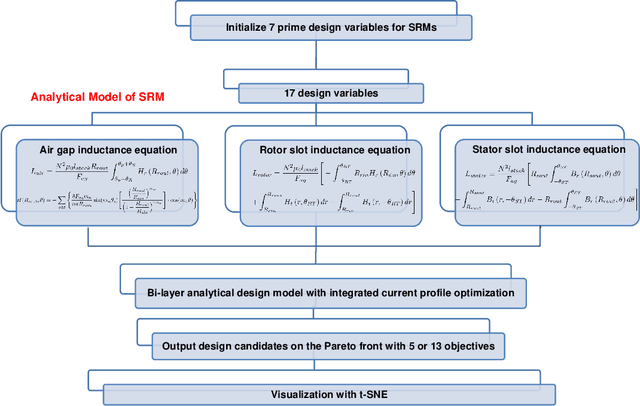
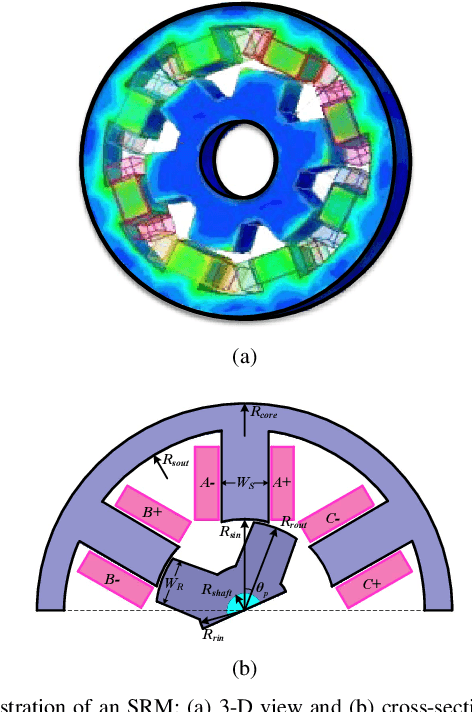
Abstract:The optimization of electric machines at multiple operating points is crucial for applications that require frequent changes on speeds and loads, such as the electric vehicles, to strive for the machine optimal performance across the entire driving cycle. However, the number of objectives that would need to be optimized would significantly increase with the number of operating points considered in the optimization, thus posting a potential problem in regards to the visualization techniques currently in use, such as in the scatter plots of Pareto fronts, the parallel coordinates, and in the principal component analysis (PCA), inhibiting their ability to provide machine designers with intuitive and informative visualizations of all of the design candidates and their ability to pick a few for further fine-tuning with performance verification. Therefore, this paper proposes the utilization of t-distributed stochastic neighbor embedding (t-SNE) to visualize all of the optimization objectives of various electric machines design candidates with various operating conditions, which constitute a high-dimensional set of data that would lie on several different, but related, low-dimensional manifolds. Finally, two case studies of switched reluctance machines (SRM) are presented to illustrate the superiority of then t-SNE when compared to traditional visualization techniques used in electric machine optimizations.
Machine Learning and Deep Learning Algorithms for Bearing Fault Diagnostics - A Comprehensive Review
Jan 24, 2019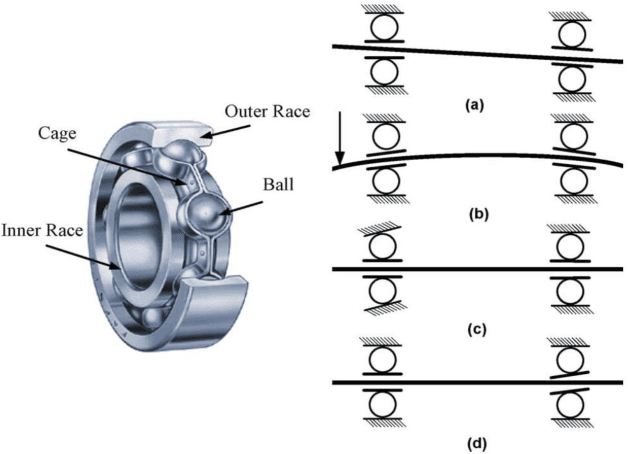
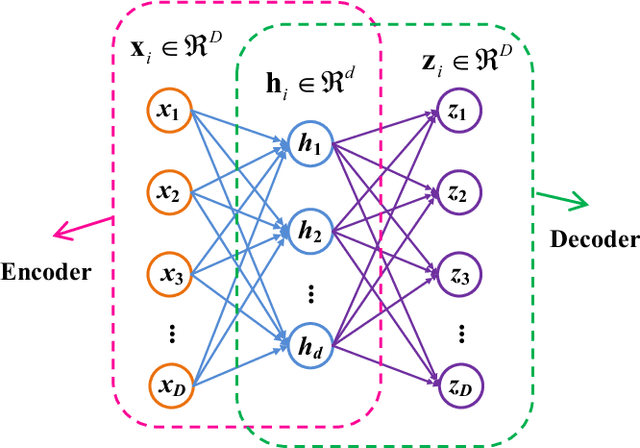
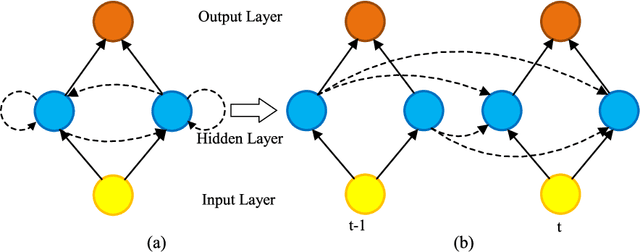

Abstract:In this survey paper, we systematically summarize the current literature on studies that apply machine learning (ML) and data mining techniques to bearing fault diagnostics. Conventional ML methods, including artificial neural network (ANN), principal component analysis (PCA), support vector machines (SVM), etc., have been successfully applied to detecting and categorizing bearing faults since the last decade, while the application of deep learning (DL) methods has sparked great interest in both the industry and academia in the last five years. In this paper, we will first review the conventional ML methods, before taking a deep dive into the latest developments in DL algorithms for bearing fault applications. Specifically, the superiority of the DL based methods over the conventional ML methods are analyzed in terms of metrics directly related to fault feature extraction and classifier performances; the new functionalities offered by DL techniques that cannot be accomplished before are also summarized. In addition, to obtain a more intuitive insight, a comparative study is performed on the classifier performance and accuracy for a number of papers utilizing the open source Case Western Reserve University (CWRU) bearing data set. Finally, based on the nature of the time-series 1-D data obtained from sensors monitoring the bearing conditions, recommendations and suggestions are provided to applying DL algorithms on bearing fault diagnostics based on specific applications, as well as future research directions to further improve its performance.
 Add to Chrome
Add to Chrome Add to Firefox
Add to Firefox Add to Edge
Add to Edge